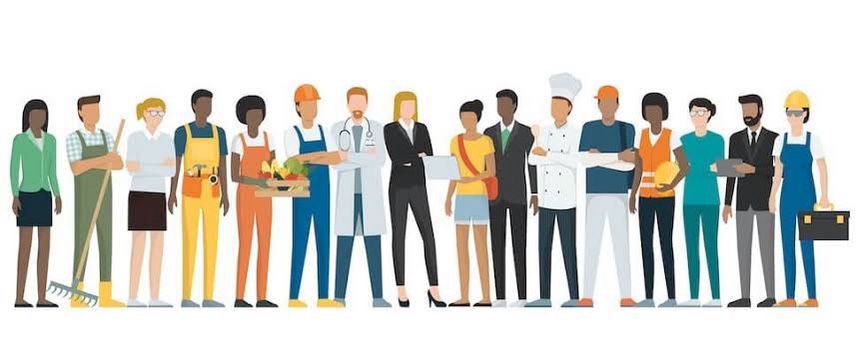The unemployment rate is speculated to have almost doubled in the last two years, from 4% to 7.6%. According to the latest numbers released by think-tank Centre for Monitoring Indian Economy (CMIE), India’s unemployment rate hit a 3-year-high of 8.4 percent in August 2019.
Indian youth today is motivated and driven. Indian youth combine the values of a traditional Asian household with the dreams and aspirations of an American teenager. They aspire to break free of the bonds of the four walls and step foot into the real world to be autonomous. But some dreams just end up staying a dream. As per the 2011 census, Youth of India (15–24 years) constitutes one-fifth (19.1%) of the total population, and this percentage is expected to rise to about 34.33% by the year 2020. The common perception behind the growing and developing economy is India’s educated youth. There is enough evidence against the perception.
For starters, the percentage of unemployed youth has reached an unbelievable high. The unemployment rate is speculated to have almost doubled in the last two years, from 4% to 7.6 %. According to the latest numbers released by think-tank Centre for Monitoring Indian Economy (CMIE), India’s unemployment rate hit a 3-year-high of 8.4 percent in August 2019.

Unemployment has obvious consequences, a few of them are pretty upsetting. Least to mention, it is the sheer wastage of human capital. Unemployment not only affects an individual simultaneously impacts the family and immediate peers. Sometimes, even the community. Various studies on the subject, of human capital and unemployment, demonstrate that the long term unemployment or inactivity can lead to unfavorable effects on human capital. To make the situation worse, sometimes, leading to a permanent decrease in the earning potential of the affected community, in this case, the country’s youth.
Unemployment is one of the biggest evils our country is facing. When one unemployed person in the family creates immense stress on the already tight purse strings of a poor or middle-class household, the stress percolates down to each and every family member and in a larger perspective, to the society. Beyond a point, the affected can lose hope of ever finding employment, and can, possibly, turn into unsocial elements. As we have seen a direct co-relation of unemployment and terrorism or crime in the states of Chattisgarh, Bihar, Odisha, and Jammu Kashmir.
Before making any more claims, let’s try to breakdown the three economic sectors: Primary, Secondary and Tertiary. The primary sector is majorly agriculture driven and employs most of our population. Employment here can be both disguised or undisguised. The secondary sector which is the industrial sector is also a major contributor to employment opportunities. The tertiary sector which is the IT and Financial Service industry contributes significantly to the GDP but not as much to the number of employments.
The growth in India is mainly a contribution of two sectors, namely agriculture and the service industry. According to the figures, agriculture employs 45% of the population and contributes to 15% of the GDP, on the other hand, the service sector is the largest contributor to the GDP but employs less than 15%.

According to CMIE, in January 2017, there were 408.4 million employed people in the country. The number of unemployed or seeking jobs was 25.9 million. Seven months later, in July 2017, the number of employed fell to 405.4 million. But the number of those looking for jobs also fell to 13.7 million. One possible reason for the youth to not seek jobs can be that all of them want to become entrepreneurs. With new policy amendments to encourage start-ups, there are actually very few who want to pursue jobs, instead, everyone today wants to be their own boss.
We can go endlessly giving statistics and talking about the situation of unemployment but it is always wise to seek solutions than lingering over problems.
The agricultural sector would benefit immensely if cooperatives are encouraged to give soft loans. These soft loans can improve the transportation and infrastructure of agriculture, as due to poor transportation and infrastructure the production gets wasted. For example, plums and apricots grow in Himachal Pradesh but rarely reach other states. Even if they do, the production is sold at an unreasonably high price which again becomes unviable. Also, the fruit which is too ripe to be transported could be processed into jams, squashes, etc. This simple endeavor would increase employment for the local youth in the harvesting, packaging, warehousing, transportation, food and preservation division; and also increase revenue for the local village.
In the secondary sector, MSMEs (Micro Small Medium Enterprises) lag behind because of a lack of formal and easy funding and red-tapism involved with it. If the process of funding is eased off and the infrastructure like roads, means of transportation, warehousing, power supply, easy and timely availability of raw material(at a fair price) is improved, the production capability of each unit would increase tremendously. Eventually, boosting sales and incurring profits, thus pushing employment in the future.
Large investments come in from foreign companies, the present government has done and is doing a lot in making India’s presence felt in the international market. Large foreign companies are looking at India as a giant market but the moment they take a step forward, they are almost strangled by red-tapism, bureaucratic controls, multi-level clearances, licensing and complex and even heavy taxes. If we have a single window for issuing licenses and other business-related activities, in brief, easing the entry of foreign companies into the Indian market, our youth would get a tremendous boost in the employment opportunities.
India is a developing economy and has a bright future ahead because of its large educated workforce, it is also a huge center of consumption, because of its humongous population. Government by taking steps in all these sectors would ensure all-round growth, initiating a boost in the economy and eventually, a reduction in unemployment.




